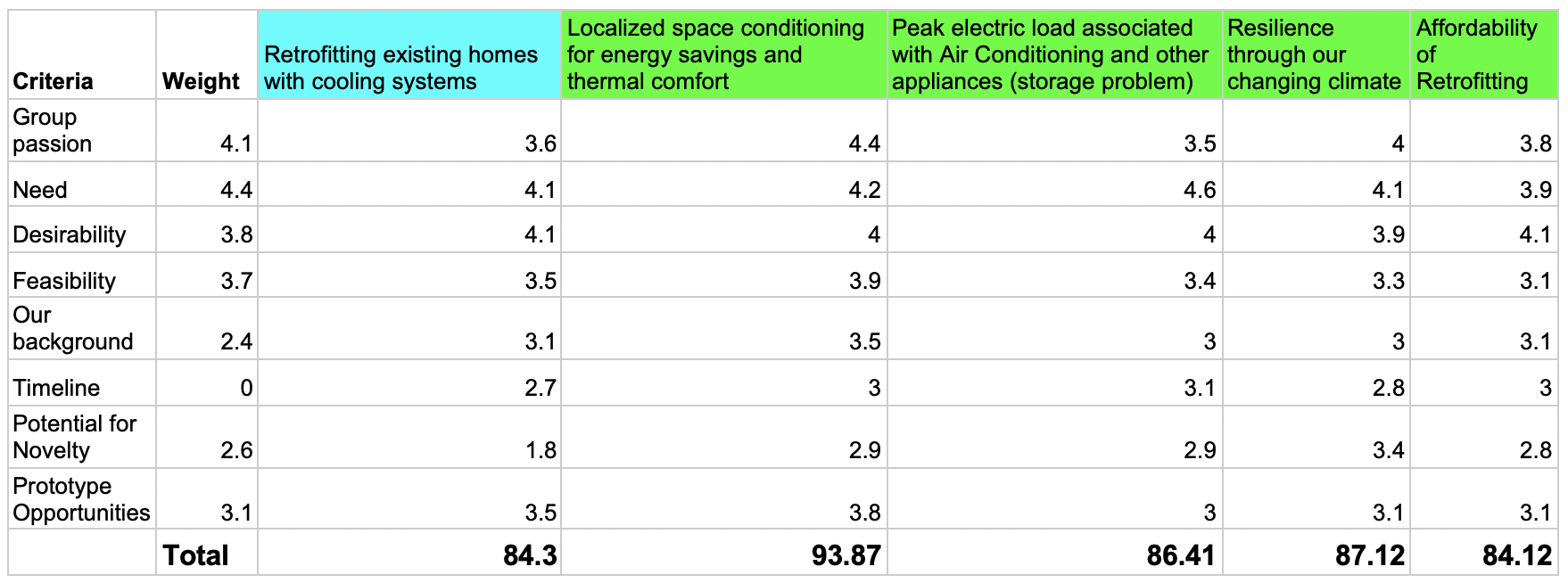Collectively as a team, we narrowed down the selection of a problem that stemmed from our agreed upon market selection of “individuals wanting shelter and comfort.”
After extensive research on this market, we brainstormed problems we felt were worth looking into.
To select a problem we could all agree on we created a Pugh Matrix.
- The Pugh Matrix is a criteria-based decision table which uses criteria scoring to determine which potential problem should be selected.
The criteria we used to evaluate the brainstormed problems include: group passion for the problem, the need for the problem to be solved, how desirable is having a solution to the problem to society, how feasible is coming up with a solution, how extensive is our background on the problem, the feasibility of completing the project within the academic timeline , the potential for novelty of its solution, and the prototype opportunities for the problem solution.
Using the website Mentimeter, we were able to anonymously vote on the importance of each criterion.
A typical voting result on a problem would look like this:

A summary of our results from Mentimeter is shown below in the resulting Pugh Matrix:

The five columns in the matrix are the problems that received the highest votes. The columns highlighted in green are problems that correlated the best with each other.
Individually, we came up with problem statements that involve all aspects of the “green column” problems. We then collectively edited all the problem statements into one final problem statement which can be seen under the header, “problem statement,” on our website:
Brainstormed Problems:
- Energy consumption associated with dehumidification
- Losses related to AC/DC conversion and inversion
- Retrofitting existing homes with cooling systems
- Energy consumption associated with cooling in dry climates
- Localized space conditioning for energy savings and thermal comfort
- Peak electric load associated with A/C and other appliances (storage problem)
- Resilience through power outages
- Linkage of decreased cognition with poorer ventilation
- 10% of cognition capability is lost because of bad ventilation – IEQ information
- ERV wheel maintenance/CORE energy recovery/wasted energy (trade-off between efficiency and maintenance)
- Resilience through our changing climate
- Affordability of retrofitting